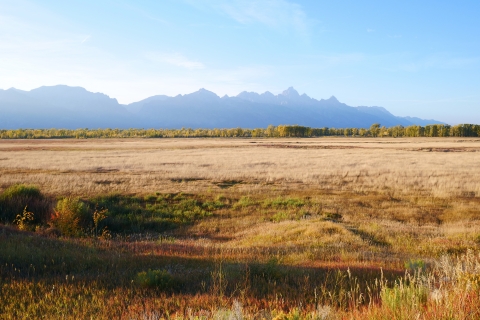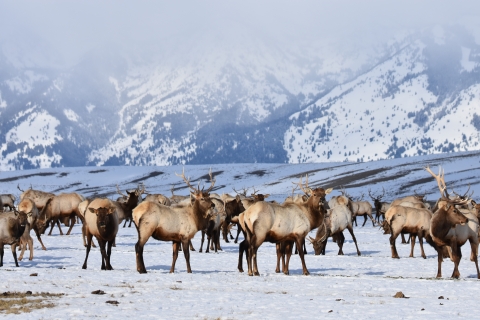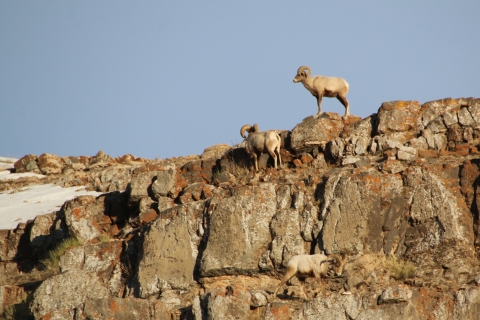When leaves begin to topple from trees and the chatter of morning birds vanishes, the silent hum of Earth abruptly reminds us that winter is quickly approaching. Ranger Kari is out on the National Elk Refuge in Jackson, Wyoming, looking through a pair of binoculars at a cliffy butte, called Miller Butte.
It's a cold autumn morning on the Refuge. "Where are the elk?" shouts an excited visitor from a nearby parking spot. "They are way up there!" responds Ranger Kari, as she directs the visitors attention to the distant mountains across from the Refuge.
From late spring through early autumn, elk are not present on the Refuge. Rather, they spend this portion of the year in the Teton, Gros Ventre, and Absaroka Mountains. "Think of the National Elk Refuge as the 'National Winter Elk Refuge'" Ranger Kari tells the visitor.
In September and October, colder temperatures accompanied by snow will pressure elk to begin an arduous but necessary movement from the nearby mountains into the valley of Jackson Hole. Migration is an incredibly beautiful and exceedingly rare wildlife event. Visitors to the area during this time are delighted to see elk gathering in large numbers north of the Refuge in Grand Teton National Park. "Your best bet to observe elk in the autumn is to head to Grand Teton National Park. Elk are gathering for their annual mating, called a rut. At this time, bull elk are calling out to cow elk through high pitched calls, or bugles!" Ranger Kari exclaims. "The calls are haunting and boisterous. It makes me think of prehistoric creatures who roamed the Earth millions of years ago."
From November through December, elk will continue their seasonal migration, eventually resting on the National Elk Refuge. Roughly 8,000 elk will spend winter on the Refuge, in search of food, water, shelter, and space. During this time, visitors are able to see large numbers of elk gathering in open fields on the Refuge. Many visitors to the Refuge will take a sleigh ride or travel along the Refuge Road to observe elk. "If you want to see elk on the Refuge, visit us between January and March. That is my favorite time of year on the Refuge," Ranger Kari tells the visitor.
"Well what are you looking at if there are no elk here?" The visitor curiously asks. "Great question! I am looking at a herd of Bighorn sheep!" On the cliffs of Miller Butte, a herd of Bighorn sheep are grazing and resting on a steep slope.
Bighorn sheep are migratory as well. "They don't spend the entirety of the year on the Refuge. In fact, they just showed up!" Ranger Kari continues. "They have traveled from the high rocky plateaus of the Gros Ventre Mountains, east of the Refuge."
There is always wildlife on the Refuge, however, many animals in this areas are migratory. The Refuge is the seasonal and permanent home to numerous species. "A great rule of thumb on the Refuge: if it is an animal with hooves or feathers, it's home probably changes with the weather!" Ranger Kari tells the visitor.






